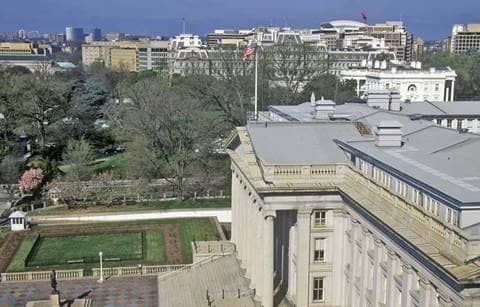The One, Big, Beautiful Bill (OBBB) didn’t attempt a major rewrite of U.S. international tax rules, but it instituted several important refinements, extensions, and percentage adjustments to existing tax provisions that affect U.S. businesses with international operations. Some key concepts that were introduced to the tax law in the Tax Cuts and Jobs Act (TCJA) have been modified under the new law, including:
- Global intangible low-taxed income (GILTI), which saw some changes and is now known as “net CFC (controlled foreign corporation) tested income” (NCTI).
- Foreign-derived intangible income (FDII), which was also revised and is now known as “foreign-derived deduction eligible income” (FDDEI).
- The base erosion and anti-abuse tax (BEAT), which saw some minor modifications.
A more detailed look at these changes and a few other highlights follows.
From GILTI to NCTI and the changes in taxing controlled foreign corporations
The OBBB modified several concepts and calculations related to U.S. taxation of income attributed to CFCs. Going forward, these amounts will be known under the abbreviation, NCTI, for “net CFC-tested income” instead of GILTI. Whereas the GILTI regime subjected CFC income to U.S. tax if it exceeded 10% of the net book value of the CFC’s depreciable assets (qualified business asset investment or QBAI), the new NCTI concept eliminates QBAI from the calculations. The result is that the income and losses of CFCs are netted at the U.S. shareholder level and brought into the U.S. shareholder’s taxable income. The previous law also created Internal Revenue Code (IRC) Section 250 that allowed for a 50% tax deduction from overall GILTI income for eligible U.S. corporations. The OBBB reduced that percentage to 40%, resulting in a net effective tax rate of 12.6% for this type of income, up from 10.5% under GILTI.
On a positive note for affected taxpayers, the new law did make some changes to the interaction between the foreign tax credit (FTC) and the GILTI regime as it made the switch to NCTI. The OBBB eliminated some of the expense allocations on the foreign tax credit side that had previously restricted the ability of affected taxpayers to offset those inclusions in the United States. The expenses allocated against the NCTI basket for FTC purposes are now limited to only the Section 250 deduction related to NCTI and expenses directly allocable to NCTI. Interest and R&D expenses allocations are no longer part of the calculation.
These allocations had previously limited the use of foreign tax credit exclusions in some cases. Early indications are that these modifications should result in an increase in NCTI inclusions, but those inclusions are more likely to be fully offset by foreign tax credits in the United States than in pre-OBBB periods.
From FDII to FDDEI
In addition to removing QBAI from the GILTI calculation, QBAI was also eliminated with respect to the FDII deduction calculation. The term “FDII” was also replaced with “foreign derived deduction-eligible income” (FDDEI). QBAI served to help distinguish overseas income from tangible assets, like buildings and machinery, from income related to intangible assets, like patents and trademarks held offshore. One of the concerns that led to the creation of the GILTI and FDII regimes in the TCJA was the trend of large U.S. companies moving intellectual property offshore to jurisdictions with low taxes on those types of assets. The elimination of QBAI will serve to add a minimal penalty to U.S.-based multinationals with overseas manufacturing operations in CFCs that include tangible assets like buildings and machinery and a slight incentive to U.S.-based multinationals that maintain those tangible assets within the states and export their products.
Asset-intensive businesses like manufacturers may now be eligible to derive some benefit from the revised FDII calculation that had been previously wiped out by the “10% of assets” calculation. Although the previous FDII deduction was reduced from 37% to 33.34% under FDDEI, this change is expected to make the benefits more widely applicable to corporations with export activity.
BEAT goes on, with a slightly different rhythm
The base erosion and anti-abuse tax (BEAT) was enacted as an attempt to reduce multinational companies’ ability to erode the U.S. corporate tax base through transactions with foreign-related parties. This created an alternative tax calculation with a lower overall rate but with certain related party payments treated as nondeductible. Under the TCJA, the rate was scheduled to climb to 12.5% in 2026, coupled with the elimination of the ability to utilize R&D credits against the BEAT calculation, leading to an increase in the BEAT liability. The OBBB permanently sets the BEAT rate at 10.5%, and it also prevents the research credit from reducing the tax liability against which the BEAT calculation is compared, effectively allowing R&D credits to offset tax calculated under BEAT.
IRC Section 899 retaliatory tax left out of OBBB, but not ruled out
One provision that did not make it into the final version of the OBBB was a proposed IRC Section 899 that would’ve served as a retaliatory tax on income earned by persons in jurisdictions considered to impose discriminatory taxes on U.S. taxpayers. The proposed section was created to allow U.S. authorities to deploy penalty rates on income earned in countries that imposed duties like digital service taxes, diverted profits taxes, or OECD Pillar 2 undertaxed profits levies.
Prior to the passage of the OBBB, the U.S. Treasury announced that it reached a “shared understanding” with the other G7 nations (Canada, France, Germany, Italy, Japan, and the United Kingdom) to move forward on a “side-by-side” system that would address the issues of base erosion and profit shifting within the framework of certain principles. Based on those discussions, which amounted to an agreement to reach an agreement in the near future, proposed Section 899 was removed from the final version of the OBBB. Since the enactment of the new law, progress toward finalizing the agreement has been limited. If the nations don’t reach a final agreement on the side-by-side system, it’s possible that Section 899 could be back on the table in future discussions.
Pro rata share rule changes offer pluses and minuses depending on when stock is held
Prior to the OBBB, the various anti-deferral regimes applicable to CFCs generally provided that U.S. shareholders recognize a subpart F or GILTI inclusion into income on the last day of the year. The OBBB adjusts the rules to require that each U.S. shareholder who owns an affected stock at any time during the taxable year include the pro rata share of the CFCs subpart F or GILTI inclusion in income. This change will have a substantial impact on taxpayers who buy or sell CFCs during a tax year, and will likely require significant coordination between buyers and sellers post-transaction.
Revisions to downward attribution rules
The constructive ownership rules of Section 318 can serve to treat a corporation (or partnership, trust/estate) as owning stock that’s owned by its shareholders, which was referred to downward attribution. Prior to the TCJA, certain stock owned by a foreign person couldn’t be attributed to a U.S. person under these rules when determining if a foreign corporation was a CFC. The TCJA removed this restriction, resulting in many corporations being designated as CFCs, especially in foreign-parented multinational groups with U.S. subsidiaries.
OBBB revives this restriction on attributing ownership from foreign persons to U.S. persons. While this is welcome relief to many taxpayers, OBBB does implement new code Section 951B, which takes a more targeted approach to determine CFC status in certain fact patterns and will result in certain structures still resulting in unexpected CFC status.
International guidance expected by end of 2025
The IRS regularly updates a list of regulatory guidance projects known as its “Priority Guidance Plan,” and provisions enacted as part of the OBBB make up a significant portion of the projects currently underway. Among other things, projects that will provide important insights on IRS administration of the provisions discussed in this article include guidance on:
- Determination of a U.S. shareholder’s pro rata share of a controlled foreign corporation’s subpart F and net CFC tested income.
- FDDEI and net CFC tested income.
- Allocation and apportionment of expenses and other foreign tax credit issues.
Multinational businesses with U.S. tax obligations will need to stay in close contact with their tax advisors over the next few months in order to monitor additional developments in these changes to U.S. international tax rules. Some changes may affect the 2025 tax year, while many more will need to be addressed as early as possible to plan for effective dates in 2026.





